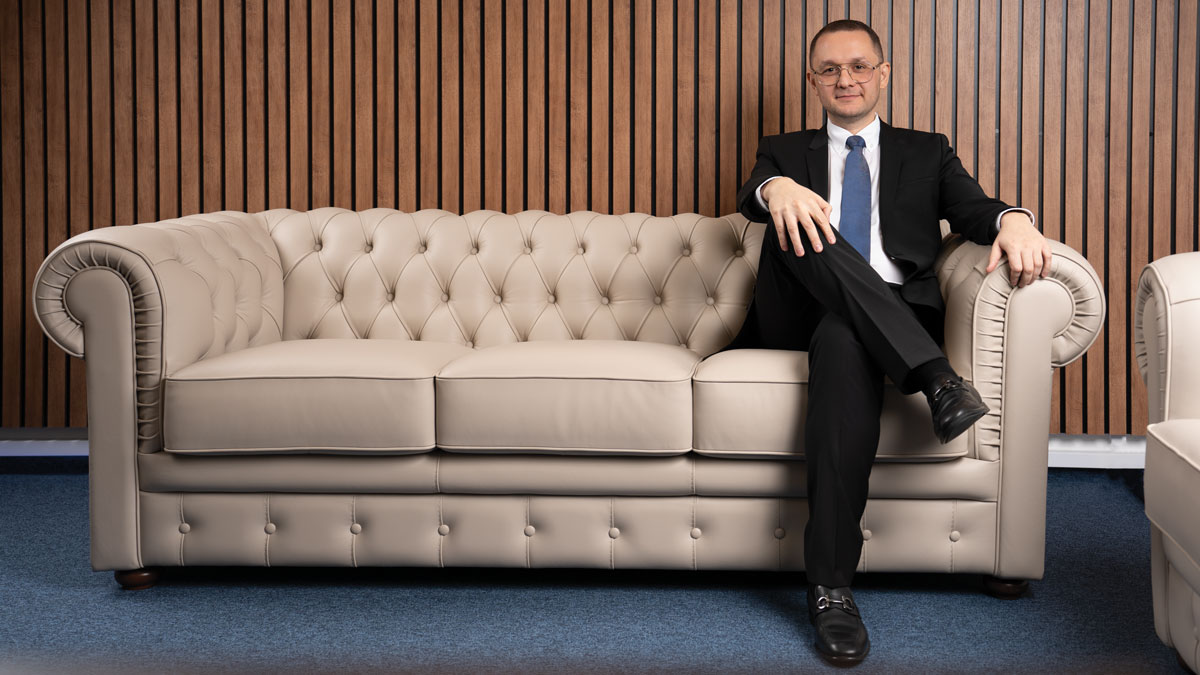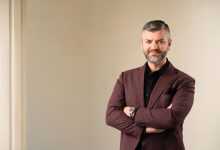Alexandru Chirita, CEO of Electrica: Promise of Innovation – Shaping a Sustainable Future
Alexandru Chirita – CEO of Electrica, reviews the company’s most important ongoing projects and strategic objectives for the future.
Electrica Group is a key player in the electricity supply, distribution, and production market in Romania and one of the most important players in the energy services sector. Since July 2014, Electrica has been a majority privately owned company, listed on the Bucharest and London stock exchanges, being the only Romanian listed company in the field of electricity distribution and supply in Romania.
Recently, the company achieved a national first by implementing a system of artificial intelligence algorithms that will have the ability to identify the real-time energy footprint of the main receivers in the head office in a process of indirect monitoring.
Alexandru Chirita is a professional with a substantial experience in the legal and energy fields. He earned his bachelor’s degree from the Faculty of Law at the University of Bucharest in 2008, and subsequently dedicated nearly a decade to practicing law.
Throughout his career, he has amassed comprehensive expertise in consultancy on various legal matters, encompassing corporate law, commercial transactions, and litigation. His profound understanding of legal frameworks, coupled with his aptitude for devising and executing effective legal strategies, has been instrumental in achieving organizational objectives.
Alexandru Chirita’s multidisciplinary background is evident in his academic accomplishments. He holds a Master’s degree in Law and European Governance from the National School of Political and Administrative Studies (SNSPA), a Master’s degree in European Union Law, and a Bachelor’s degree in Law from the Faculty of Law at the University of Bucharest. He is currently pursuing a PhD in Administrative Sciences at SNSPA.
Before joining Electrica, he held the positions of Legal Manager and Data Protection Manager at Hidroelectrica. In these capacities, he formulated and executed legal and data protection strategies, ensuring compliance with regulatory mandates, managing litigation and disputes, and supervising contract negotiations. His legal acumen and experience have proven invaluable in his role as CEO of Electrica, a position he has held since May 2022.
Dear Mr. Chirita, the discussion about the national energy system and its evolution involves a number of elements, such as the capacity factor, balancing the system, distribution of production capacities in relation to points of consumption, etc. What is your vision of this ensemble?
Alexandru Chirita: A broad discussion on the evolution of the national energy system is imperative in the light of the increasing dynamism in the industry, technological developments, and the economic and social climate in which we operate. As the question points out, a defining characteristic of the national energy system is balance, something I consider vital for the entire energy sector and beyond.
As a rule of good practice, it is essential to analyse and address the vulnerabilities of the national energy system, especially given the current geopolitical context. At the forefront, we need to implement innovative solutions to maintain the balance between supply and demand. Using smart grids and advanced monitoring technologies, we can effectively anticipate and manage variations, ensuring system stability in any conditions.
Optimisation of the capacity factor is of major importance to ensure constant energy production, adapted to fluctuating market requirements. And investment in upgrading and expanding capacity, along with the adoption of advanced technologies, is essential in this direction. In terms of distribution of production capacity, we need to continually explore ways to minimise transmission losses and maximise efficient delivery of energy to consumers, considering technological developments and grid geography.
Also, to stay abreast of market changes, manage risk and respond quickly to industry developments, we need to be open to adopting emerging technologies such as artificial intelligence and data analytics. Just as a craftsman constantly improves his tools, we too must adapt and adopt modern technologies to ensure the efficiency and resilience of the national energy system.
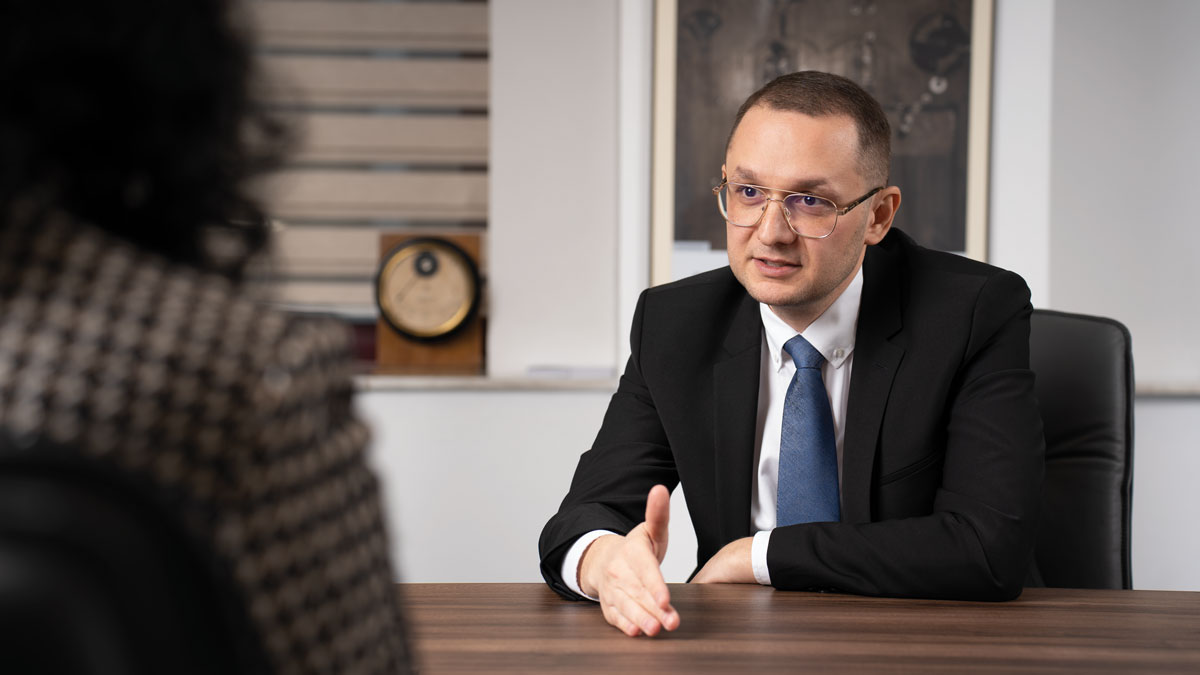
What are Electrica’s most important ongoing projects? What investments are we talking about, and which areas are targeted?
Alexandru Chirita: Our priorities in terms of projects are directed towards initiatives designed to bring significant added value to the modernisation and optimisation process that we are carrying out within the Electrica Group. The initiatives are underpinned by our strong commitment to innovation, sustainability, and efficiency, and help shape a strong energy future that meets the needs and demands of the nearly 4 million consumers we serve and lives up to the expectations of our shareholders and investors, while contributing to the evolution of society.
As we have done since our listing on the stock exchange, the main projects we have in progress or in the planning stage are focused on the business segment that requires the largest allocation of resources – electricity distribution. And the modernisation of distribution networks has been one of our main priorities in recent years. We adopt advanced technologies to create smart grids capable of dynamically managing supply and demand, efficiently integrating renewables, and providing innovative control and monitoring solutions. In parallel, we are also investing in infrastructure expansion to strengthen the capacity of our networks and to minimise energy losses.
In the supply business, we are dedicated to improving our customers’ experience through a variety of digital solutions that give them easy access to billing information and allow them to report issues more fluidly. These digital tools not only benefit customers but also contribute to the efficient management of operational processes.
On the production side, we are involved in extensive renewable energy projects and are constantly looking for opportunities that can contribute to diversifying the production mix and promoting sustainability in the energy sector. Now, our most ambitious project is the construction of a state-of-the-art combined cycle gas-fired power plant that integrates a hydrogen component and storage capacity. It would be located in Fantanele, Mures County, and would have a maximum installed capacity of 500 MW. The project team has started the market research for the feasibility study and once we have it, we move on to the stage of getting all the necessary corporate approvals.
We are also working on numerous initiatives to support increased energy efficiency in buildings, including energy management solutions and equipment upgrades to significantly reduce energy consumption. The most recent of these is to be carried out at our head office and will consist of creating an artificial intelligence-based algorithm system for building energy footprinting.
At the same time, we are accelerating digitalization projects aimed at optimizing operational processes and ensuring cybersecurity in all Electrica Group activities. And because digital transformation requires the right workforce, we focus on training and developing employees’ skills to adapt to the rapidly evolving technology landscape. It is an ongoing component that ensures our team is well prepared to manage and maximise the performance of the digital infrastructure.
Cyber security is another issue that has always been of critical importance to us, especially as our field is facing a rapid diversification of cyber threats. Attacks on energy infrastructures have evolved from simple attempts to block online services to sophisticated threats such as ransomware attacks or large-scale cyber operations. It is vital to understand this evolution and identify proactive ways to adapt to the new realities of cyber security.
Specifically, in the supply segment we are focusing our efforts on implementing internationally certified and validated central systems with verified resilience and redundancy. This direction is supplemented by the development of cryptographically secure interfaces through which our customers can benefit from the most secure and user-friendly services. In the distribution segment, efforts are directed towards strengthening and securing the operational technology, which includes remote command/control systems, metering, and network protection systems, etc.
In this context, collaboration between companies in the energy industry is crucial in the face of increasingly complex and sophisticated cyber threats, and I want to stress the importance of information exchange on this topic. By strengthening partnerships with other companies in the field, we can learn from a variety of experiences, so that we can then identify attack patterns and implement common preventive measures.
A collaborative approach not only strengthens each company’s individual defences, but also helps to define common security standards, thereby strengthening the entire energy infrastructure against rapidly evolving cyber threats.
In 2023, Electrica has attracted significant non-reimbursable funding for the development and modernisation of distribution networks. What investments are you planning for this year and what will the sources of funding be?
Alexandru Chirita: The need for investment in the modernisation and development of distribution networks is unprecedented, especially given the jumps in the energy sector, accelerated by the major events of recent years. We have on the one hand, the situation of installations in operation before 2000 and, on the other hand, the need to transform distribution operators into distribution system operators.
Indeed, not infrequently we have the recurring discussion of the situation of obsolete networks in our country, which often fuel discontent in the public space. However, to have a fair discussion on the subject, I think it is also necessary to consider how much the level of investments and efforts made to modernise and develop the networks has increased.
Since the listing and until now, our investments amount to more than RON 6 billion, most of the which was used for network improvement works. And not only my colleagues at Distributie Energie Electrica Romania (DEER), the Group’s distribution operator, but all operators in the field make this a priority year after year.
In an age where we are used to having everything at a click away or in a very short time, it would be ideal if the network problem could be solved with speed. Certainly, we in the industry would like things to move at a faster pace, but the reality is that such work takes much longer than we would all like. To give you an idea, DEER is the largest electricity distribution operator in Romania and covers 40% of the country. It serves almost 4 million consumers in 18 counties of the country and manages more than 200,000 km of electricity networks, about 450 high and medium voltage transformer stations and more than 30,000 substations. Imagine the scale of the work my colleagues must do, without taking into account the disruptive factors of recent years, which have also impacted on these activities.
Moreover, there is another extremely important element in this equation – the delicate balance we have to maintain between investment needs and their translation into consumer bills, which adds extra pressure. In this respect, the regulatory framework plays an essential role, and we hope that the 2024 framework will come up with new directions to stimulate investment and provide a forward-looking remuneration system. In a predictable and adequate regulatory framework, through smart investments, companies will be able to offer their customers a quality service at a balanced cost, while achieving the objectives set at EU level.
The good news is that, although national and European regulations require that investments be recognised in the distribution tariff, included in the final invoice price, non-reimbursable funds are exempt from this provision. And I can happily say that the efforts of my colleagues at DEER have paid off, and at this moment we can boast a very high degree of attracting European non-reimbursable funding, perhaps even the highest in the industry.
Most recently, Distributie Energie Electrica Romania has attracted EUR 171 million through the Modernisation Fund, representing 80% of the eligible expenditure for 7 new investment projects in the distribution network, the total estimated value of which is approximately EUR 266 million. These complete the list of the 6 already approved, for which DEER has attracted around EUR 82 million through the Modernisation Fund. Regarding the status of these six projects, three are in execution, two are in the procurement phase and one is in preparation for procurement. Thus, DEER has so far attracted almost a quarter of a billion euro from the Modernisation Fund, about 42% of the total funding already signed under the Modernisation Fund. And we have 17 more projects submitted.
Three of the projects, worth a total of about EUR 161 million, of which about EUR 105 million are non-reimbursable funds, are dedicated to the implementation of the smart electricity metering system in the county seats in all the areas covered by DEER. The project involves both the installation of approximately 1.18 million smart meters and the upgrading of 327 substations by installing distribution transformers with regulation under load, thus facilitating the connection of prosumers.
The other 4 projects, worth a total of EUR 104.86 million, of which EUR 66.13 million are non-reimbursable funds, will be carried out in the counties of Sibiu, Galati and Dambovita, and are aimed at the modernisation and construction of new distribution networks on all voltage levels, the modernisation of some transformer stations, the implementation of digitalisation and smart metering systems. And these are just some of the issues we will focus on in the near future.
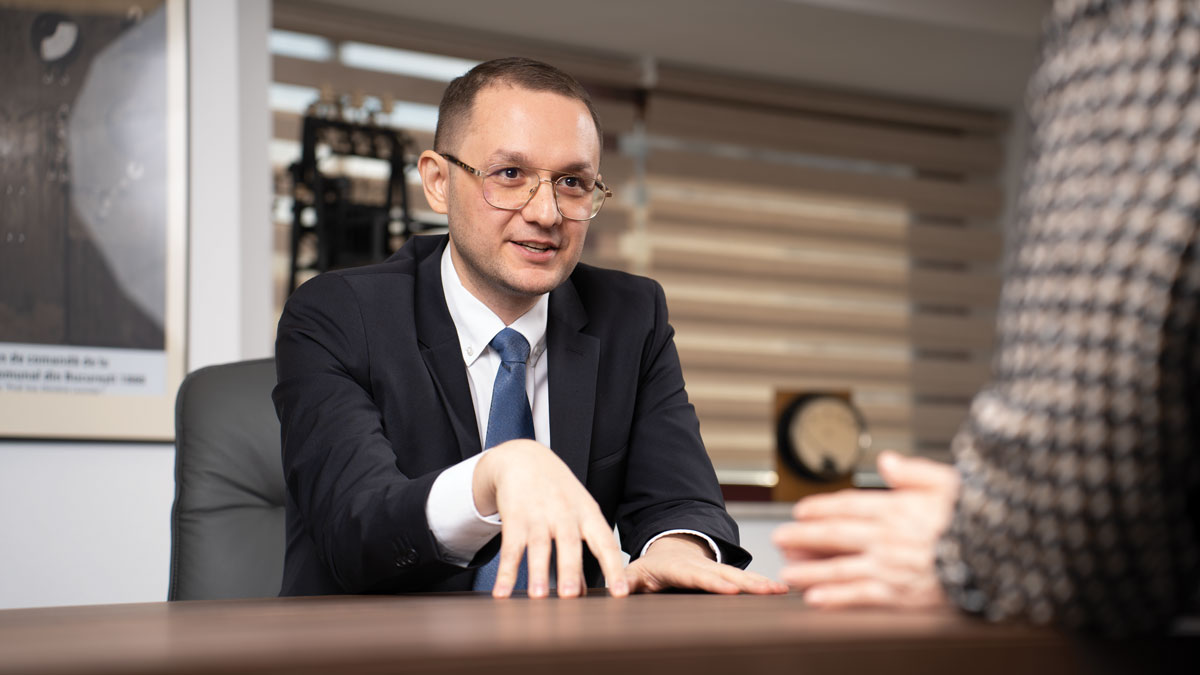
Digitalisation, artificial intelligence, and sustainability are hot topics in the just energy transition. How does Electrica treat these concepts?
Alexandru Chirita: For us they are even more than topical. They represent some of the central pillars of the Group’s long-term strategy, as well as a reflection of the commitment to innovation and excellence in the field. We believe that these directions not only respond to the current challenges of the energy transition, but also shape the future of energy services, laying the foundations for a cleaner, more efficient, and customer-friendly energy system.
Digitalization has become a strategic priority for Electrica since its listing almost 10 years ago. Shortly after this important moment in the company’s life, which we are celebrating this year, we have embarked on an ambitious digital transformation process, aimed at both modernising our internal infrastructure and improving our customers’ experience. This approach aims at implementing advanced systems for efficient network management, automation and streamlining of processes, as well as the development of digital solutions that allow customers easy access to information and services. Through digitalisation, we aim to increase operational efficiency, reduce costs, and optimize work processes, while ensuring a high level of satisfaction for our customers.
In terms of sustainability, we are constantly striving to integrate the principles of sustainable development into all segments of our business, and we are committed to being a major player in the sustainable energy transition process for customers, the environment, and communities. In recent years, within the Electrica Group, we have addressed numerous sustainability issues and carried out activities aimed at having a positive impact on the environment and the communities in which we operate. These include implementing smart grid technologies, reducing carbon dioxide emissions, promoting energy efficiency programmes for consumers, and encouraging the adoption of green technologies. Another essential element of our sustainability strategy is the development of partnerships with local communities and various organisations to support the transition to a more sustainable energy system.
We remain committed to increasing the share of renewable energy in our energy mix and are working hard to reduce carbon dioxide emissions through more efficient production and distribution processes. In addition, we focus on energy efficiency projects both within the company and among customers, promoting solutions and technologies that contribute to reducing energy consumption and optimising the use of resources. We aim to implement innovative solutions that contribute to the circular economy and work with all stakeholders to promote sustainable practices across the industry.
Returning to the synergy between technology and energy, artificial intelligence (AI) is another area where Electrica Group is focusing its resources and creative energy. It is an integrated concept in our innovation and development directions and is used out of a desire to improve our analysis and prediction capabilities. With AI, we can develop smart grid monitoring and control systems that allow us to anticipate and effectively manage fluctuations in consumption and production. These systems help us to optimise energy distribution, improve the quality of services offered and minimise environmental impact. Artificial intelligence also contributes to the development of predictive maintenance solutions, reducing the risk of outages and ensuring better reliability of our services.
I am convinced that AI and the energy sector will become strong partners in the future, especially because of the major role it can play in managing complex energy systems and accelerating innovation. It’s what we call a game changer. Without artificial intelligence, system operators and utilities in general will only be able to make efficient use of a small fraction of the new data sources and will miss out on a significant portion of the benefits. At the same time, we must not overlook the risks associated with this technology, especially those related to cyber security and AI energy consumption. There is also a need to create and adopt appropriate governance frameworks and mechanisms for data sharing and the use of artificial intelligence in the energy sector.
Just and fair energy transition targets vulnerable consumers, energy poverty, households without access to energy. How do prosumers fit into this landscape?
Alexandru Chirita: Within the Electrica Group, we are taking a very careful approach to the challenges and opportunities brought about by the energy transition, focusing on expansion in electricity generation from renewable sources. From our perspective, these steps are essential not only for achieving sustainability goals, but also for the durable economic growth of the Group companies. We therefore see the integration of prosumers into this landscape as a key component of our strategy.
Consumers, whether we are talking about individuals or households that produce the energy they consume (in part or in full), are a cornerstone in building a just and fair energy transition. Not only do they reduce their own energy bills, but they can sell the surplus, thus contributing to the diversification and decentralisation of the energy system. This dynamic can play a key role in alleviating energy poverty by providing vulnerable households with the means to generate additional income and reduce dependence on traditional, often more expensive, energy sources.
Integrating prosumers into the current energy landscape requires policies and support measures that facilitate access to renewable energy technologies and financing for these households. Encouraging self-consumption and energy sharing in communities through smart grids and storage systems can lead to a more flexible and resilient energy system that meets the needs of all consumers, including the vulnerable ones.
In addition to the economic aspects, prosumers also contribute to raising awareness of the importance of sustainability and energy efficiency, which can stimulate responsible energy behaviour across society, accelerating the transition to a clean energy system while reducing inequality. Prosumers are therefore not only beneficiaries of the energy transition, but also important actors in shaping a sustainable energy future.
So far, in the 18 counties covered by our distribution operator, more than 40,000 consumers have been connected, with an installed power of about 450 MW. And we continue to focus on developing infrastructure and facilitating access to green technologies to encourage and support prosumers. Our efforts include investments in smart grids and energy storage solutions, essential for the efficient management of energy produced by consumers. We are also among the promoters of policies that support fair compensation for energy injected into the grid by prosumers, to ensure a sustainable income and contribute to reducing energy poverty.
In addition to the technical and financial aspects, we are dedicated to engaging communities and educating the public about the process of becoming a prosumer. In this process, we work closely with local and national authorities to align strategies and ensure a favourable regulatory framework. Our joint efforts are directed towards creating an enabling environment that allows prosumers to be active integrators in the energy system, thus supporting decarbonisation goals and the transition to a green economy.
All these steps are taken under the umbrella of our desire to be a key partner in the energy transition, supporting prosumers and promoting an inclusive and equitable approach. We believe that through collaboration, innovation, and commitment, we can build a sustainable energy future, where every household has the potential to contribute to the common benefit.
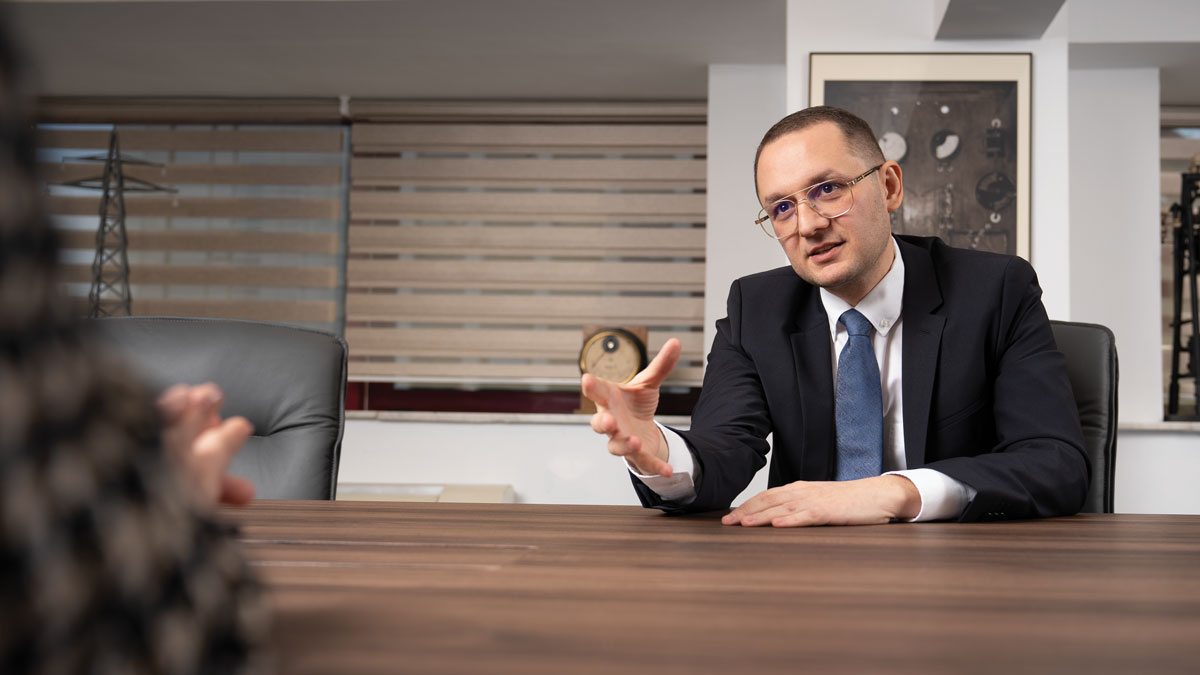
Regarding the artificial intelligence system for energy footprinting of the company’s head office, what benefits does this project bring?
Alexandru Chirita: We believe that the implementation of this project, a first for Romania, will be a significant step in promoting energy efficiency and sustainability in our operations. The innovative system, which we called AI-AE, is developed in collaboration with the Technical University of Cluj-Napoca and the startup Renergia and will allow us to monitor and analyse the energy consumption of our headquarters in real time, to locate the main sources of consumption. This will help us to identify opportunities to optimise consumption and implement specific measures to reduce energy footprint. The concept behind the AI-AE project also involves creating a cloud infrastructure for collecting and storing consumption data.
The full name of the project is ‘Development of artificial intelligence algorithms and advanced numerical methods for real-time energy footprinting of main receivers in a commercial building’ (AI-AE) and consists of the development of artificial intelligence-based algorithms that will coordinate a set of advanced numerical methods. The initiative comes as a result of the constant concern to identify effective and, why not, creative solutions to support sustainability approaches. In addition, the initiative highlights the importance of data interpretation for optimising energy consumption, an area where artificial intelligence has enormous potential.
The project will also include a dashboard tool (in the form of a web platform) for easy access to the information obtained, which will allow us to view in real time the energy consumption segregated according to the categories of receivers and to automatically generate recommendations for energy efficiency. After the implementation phase, we plan to create a strategy to replicate the solution across the entire building stock.
What are Electrica’s concerns regarding expansion in the electricity value chain, particularly in renewable energy generation?
Alexandru Chirita: In the Central and Eastern European region, a major objective is to develop renewable energy production capacities. Thanks to its natural resources, such as sun and wind, but also to its strategic geographical position, Romania has a great potential in the field of renewable energy and can contribute significantly to the energy security of the region.
As mentioned before, we place a strong emphasis on renewable generation at Electrica, as it is an essential part of our strategy to expand into complementary areas. At the same time, we are constantly analysing the challenges and opportunities that this direction brings, especially in terms of storage and efficient integration of renewable sources into the national energy mix. Our efforts are focused on developing a robust and flexible infrastructure that allows for rapid adaptation to fluctuations in renewable generation and dynamic market demands.
Investments in new technologies and network digitalisation are essential to meet these challenges. We are working closely with our partners in the technology and academic sectors to develop innovative solutions that not only allow us to improve energy efficiency, but also reduce our environmental impact. This strategic approach underpins our commitment to a just energy transition, while ensuring that we remain competitive in the energy market.
Therefore, the expansion of the Electrica Group into the sphere of renewable energy production is more than just a business decision. It is part of our vision to help build a sustainable future for Romania. As a Romanian company, we take the responsibility to innovate and implement solutions that benefit not only us and our customers, but also society as a whole. This is the direction we are determinedly pursuing, with a strong focus on promoting a green economy and ensuring a cleaner environment for future generations.
Last year was the most active in this segment. We have completed the acquisition of two companies whose main activity is the production of energy from photovoltaic sources, and which are developing the projects ‘Vulturu’, with an installed capacity of 12 MWp, and ‘Satu Mare 2’ respectively, with an installed capacity of 27 MWp, both in the ‘ready-to-build’ phase. We have other similar projects in our portfolio, in various stages of implementation, with a total installed capacity of about 300 MW. The target we have set ourselves is to reach a capacity of 1 GW in the next 4 or 5 years.
Even at the level of business architecture we pay special attention to this subject, and we are happy to say that, also last year, our shareholders approved, in principle, the merger project between Electrica and the four renewable generation companies in our portfolio. The aim of the project is also to strengthen the Group’s value chain by optimising the management of this business segment.
What are Electrica’s strategic objectives for 2024 and beyond?
Alexandru Chirita: Our current strategy, approved last December, covers the period 2024-2030, an interval which we believe will mark a significant transformation in the energy sector. It is designed to position us at the forefront of Romania’s energy transition and, implicitly, to contribute to achieving the European Union’s 2030 and 2050 targets. It reflects our commitment to ensuring the long-term sustainability of the business, while aligning with national and European strategic directions. This is why we see the new directions as not only a response to current challenges, but also an anticipation of the future of the energy sector.
The strategy is focused on three main pillars: sustainable growth of the company’s value while contributing to transition to green economy, transformation, and sustainability through large-scale implementation of ESG principles and organizational excellence programmes and, the third pillar, efficiency through increased network security, digitalisation, and improved business resilience.
As I said, our plans include diversifying renewable energy sources, with a focus on production and storage, not only to improve the profitability of the production area, but also to contribute to the transition to a green economy. We also aim to diversify our services, incorporating energy efficiency solutions and exploring regional growth opportunities, which will strengthen our position in the market.
At the same time, sustainable electrification and infrastructure modernisation are essential to our work. Here we focus on developing smart grids and increasing their flexibility to adapt to the needs of prosumers and the integration of electric vehicles. We aim to widely implement ESG principles, as well as organisational excellence programmes, to ensure that our business is solidly anchored in sustainable and ethical principles. We focus on increasing the security of our networks, digitalisation and improving business resilience, to ensure we are ready to meet future challenges in the market.
Although this strategy is our response to changes in the industry, as we have done previously, we will maintain our agility and adjust our directions depending on the market context or situations that were impossible to predict at the time of preparing the strategy. For example, this year we expect significant changes to the regulatory framework across all our operating segments – the fifth regulatory period in the distribution segment, regulations in both the electricity and gas supply segment and the electricity production segment.
Whatever the future holds, we want to keep our strategic statement – ‘The promise of innovation: Shaping a sustainable future.’
Theorists believe that an organisation’s sustainable competitive advantage is based on the development and implementation of strategic objectives. In your opinion, how do you measure the success of a strategic vision?
Alexandru Chirita: Surely the foundation of a sustainable competitive advantage lies in the ability to turn strategic vision into concrete actions and measurable results. A strategy, no matter how well articulated, proves its value only when it is translated into tangible results that add value to the company, its customers and society. This is why the implementation of the strategic vision in our company goes beyond planning and forecasting, being anchored in concrete achievements.
The most recent example of this approach is the AI-AE project. It started as an ambitious initiative, from the idea of improving the energy efficiency of our headquarters with the latest technologies. The idea quickly evolved into a well-defined action plan and is now underway, with the clear aim of redefining energy management in our workplace. This not only underpins our commitment to innovation and sustainability, but also our ability to turn strategic vision into tangible benefits.
In my opinion, the success of a strategic vision is measured by the ability to initiate concrete changes that respond to both the immediate needs of the organisation and the long-term challenges and opportunities. It is an alchemy between vision and execution, where each step towards implementation contributes to strengthening the company’s position in the market, improving the customer experience and promoting a positive impact on the environment and society.
Therefore, effective actions and the ability to generate tangible results are what I believe validate and measure the success of a strategic vision. And I would add one more thing – it is particularly important that these actions are also integrated into the organisational culture, to promote a mindset of continuous growth and adaptability.


